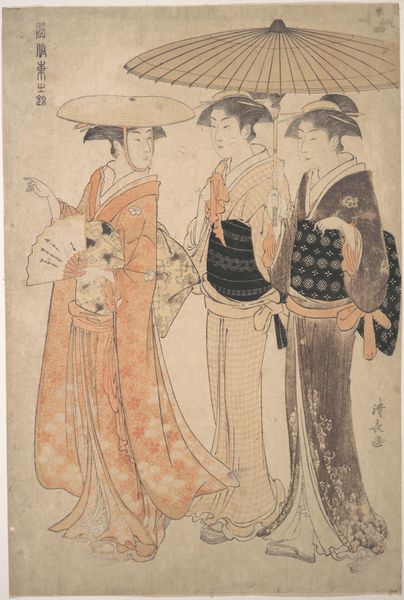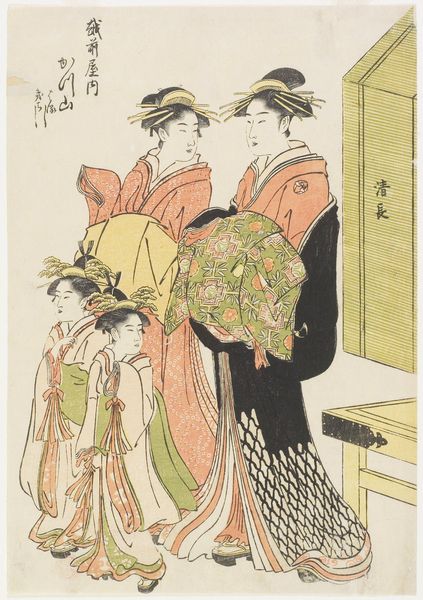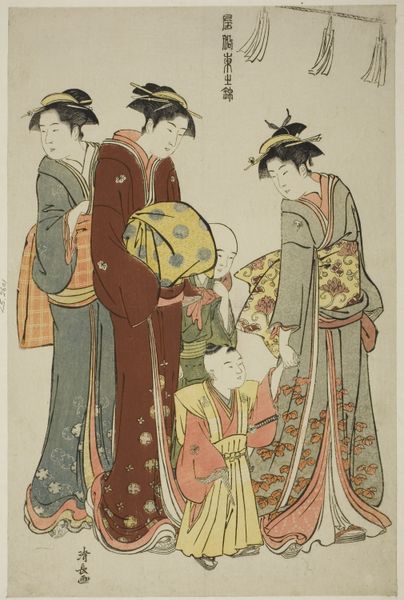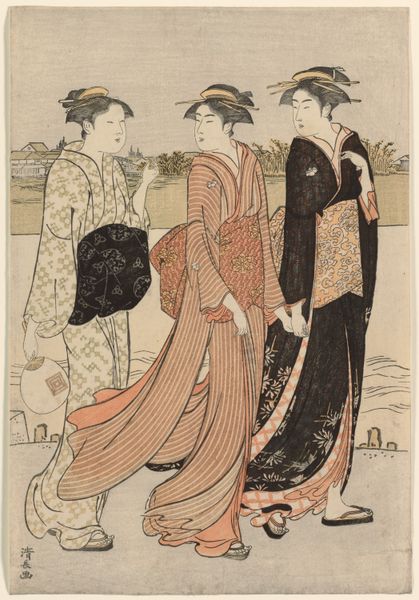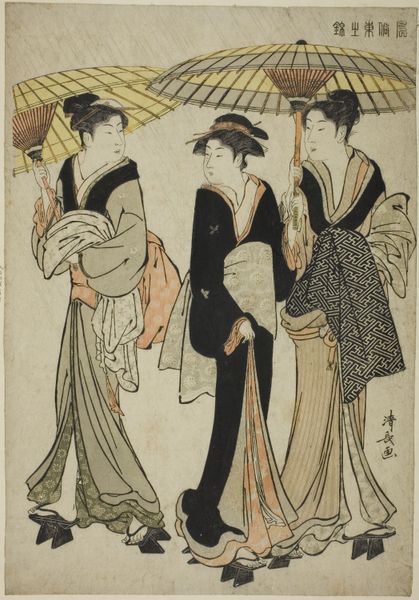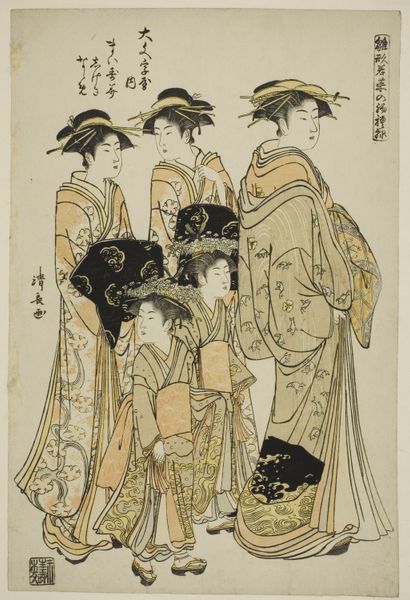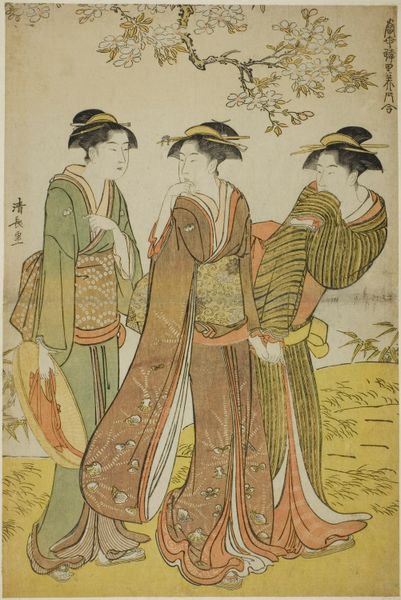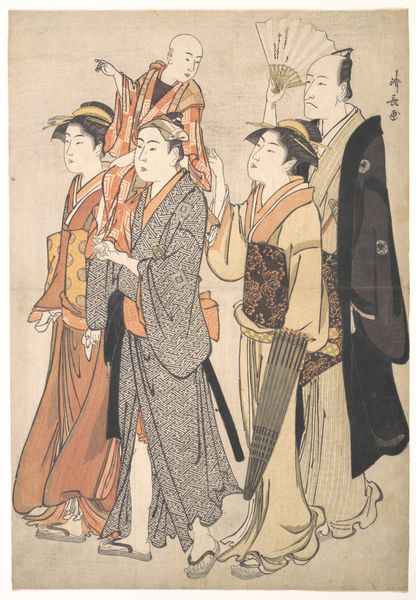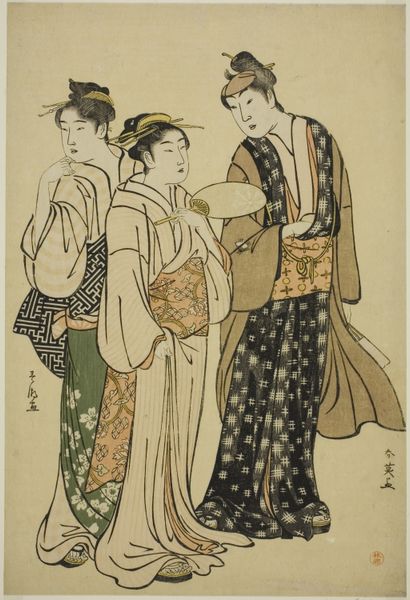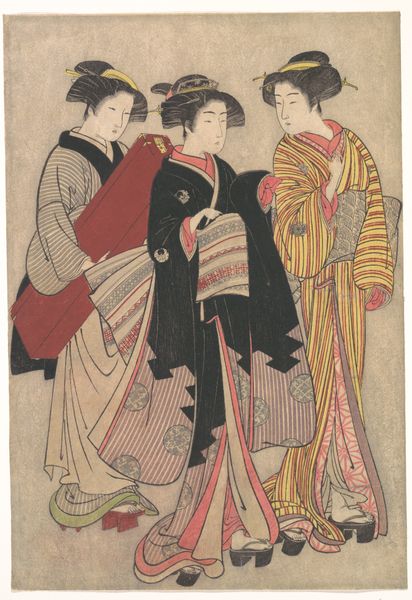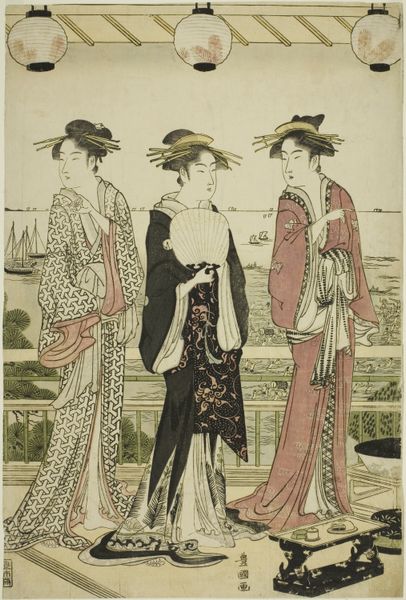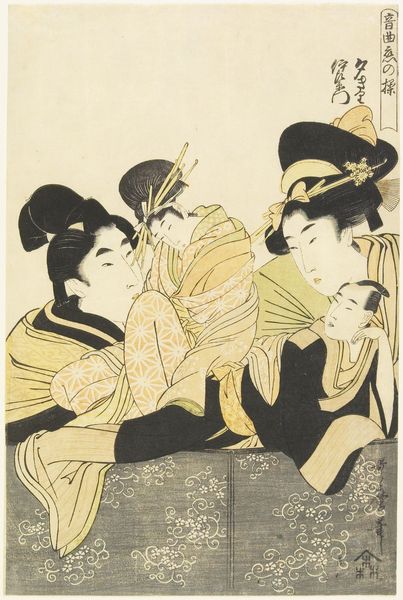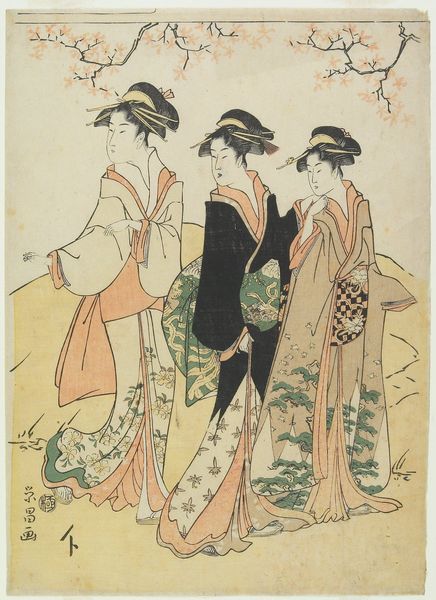
The Fifth Month, from the series Twelve Months in the Southern Pleasure District (Minami jūni kō) 1784
0:00
0:00
print, woodblock-print
#
portrait
# print
#
asian-art
#
ukiyo-e
#
figuration
#
woodblock-print
#
genre-painting
Dimensions: 14 7/8 x 9 15/16in. (37.8 x 25.2cm)
Copyright: Public Domain
Curator: Looking at this woodblock print, "The Fifth Month," created in 1784 by Torii Kiyonaga as part of his "Twelve Months in the Southern Pleasure District" series, what immediately strikes you? Editor: There’s a breezy lightness, even an elegance, in the way these women are depicted. It's interesting how he captures such poise with just a few lines. The almost pastel hues contribute to this delicate atmosphere as well. Curator: Absolutely, and Kiyonaga’s work distinguishes itself within the ukiyo-e tradition through its portrayal of idealized feminine beauty that goes hand-in-hand with contemporary socio-political changes and cultural shifts of that moment. It invites us to consider not just beauty, but also status, performance, and representation. Editor: Thinking of that status, consider the objects that surround the figures: the umbrella, the fans, the quality of the fabric—it all seems like an invocation of leisure. Beyond that, the composition emphasizes how their individual gestures contribute to the greater theme of seasonal change. Curator: You’ve hit on something critical: the arrangement in the series to highlight the shifts within Japan's pleasure districts throughout the months. The details of dress, the accessories, even the depicted architecture are indicators of class and commerce in relation to a highly structured system of female labor. The courtesans’ performance is a visual rhetoric tied into these constraints. Editor: In terms of the symbolism, one could also argue for the universality of rituals of female companionship, the gestures that hint at shared experience beyond these socio-economic specificities you are discussing. Their serene expression makes you want to decipher a deeper code of interaction. Curator: I think what complicates the romantic, universalized read of ‘companionship’ is that there's so much deliberate, calculated visual language built into ukiyo-e that connects these images to marketing, commodity, and advertisement of these women for potential clients. And that awareness creates ethical and contextual tension for the viewer. Editor: That’s certainly a vital part of understanding the layers involved. Exploring it through that context opens a portal for us to reflect on shifting definitions of femininity. Curator: Precisely, Kiyonaga's rendering prompts a layered conversation—about aesthetics, representation, commerce, and the complicated performance of gender and labor during the Edo period.
Comments
No comments
Be the first to comment and join the conversation on the ultimate creative platform.
